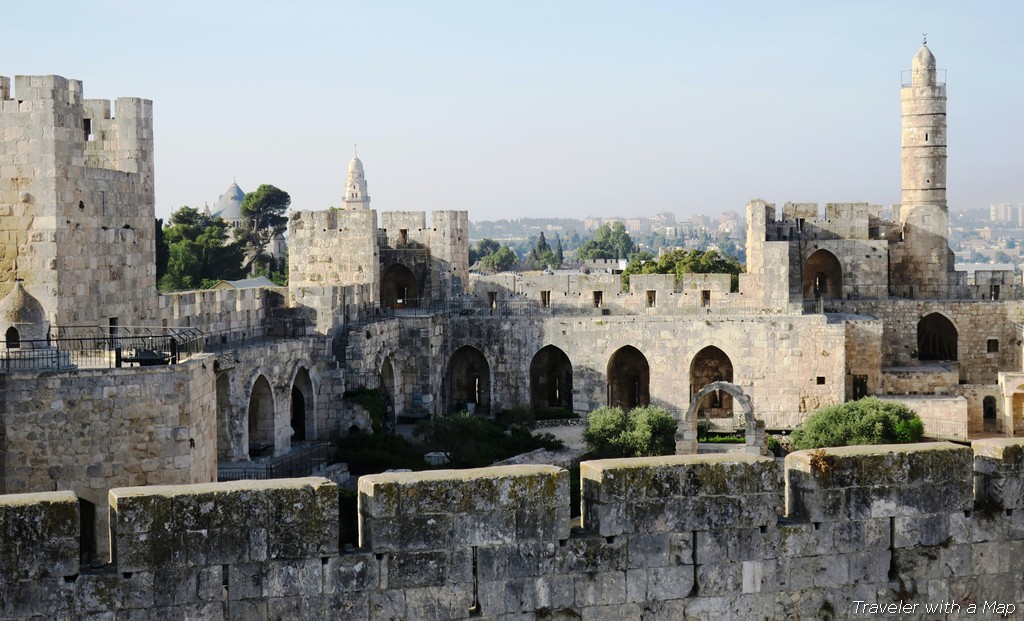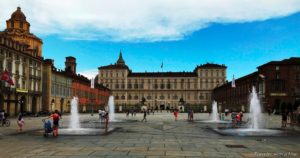The world is full of amazing places and bucket list recommendations inundate travel magazines as well as online portals. You can select places based on their natural beauty, cosmopolitan appeal or historical significance. I’ve selected 5 UNESCO World Heritage bucket list destinations you should see. I’ve based my selection on their historical importance and the role they played in their communities.
5 UNESCO World Heritage Bucket List Destinations You Should See
Machu Picchu - Peru
We visited Machu Picchu in the winter of 2009. After spending a day in Lima, we flew into lovely Cuzco where we relaxed for several days adjusting to the altitude. Finally, several days later, we boarded the PeruRail train and headed to Machu Picchu.
Located in the Peruvian Andes above the Sacred Valley, Machu Picchu is the most famous archeological site of the Inca ruins in the world.
While many people think of Machu Picchu as part of the ancient world, the city came into existence during the Inca Empire in the 15th century. It was most likely a royal estate and an important religious and ceremonial center. In fact, the most important Inca god, the sun god, was worshiped here at the Temple of the Sun. Evidently, sacrificial offerings of animals and humans were also made at this site.
When you visit Machu Picchu, you will be amazed by its archeological and natural beauty. For one thing, the climbing terraces connected to each other by a network of stairs are absolutely stunning. Additionally, the fact that the structures were build without the use of mortar is truly remarkable. Apparently, the huge granite blocks were quarried in the nearby mines and were pieced together with prefect precision to withstand the frequent earthquakes. It is certainly something to marvel at!
Machu Picchu is undeniably one of the wonders of the world. That’s why it should be on your bucket list!
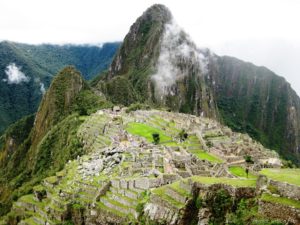
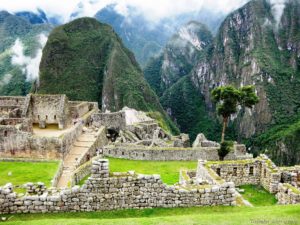
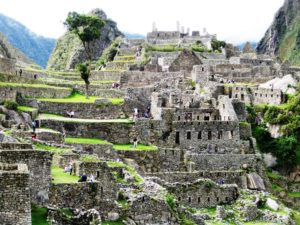
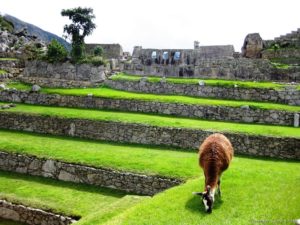
Tikal - Guatemala
The impressive Mayan ruins of Tikal National Park are located in the remote jungles of Guatemala in the province of El Peten. As one of the most notable Mayan sites, Tikal will amaze you with its towering temples, pyramids, and plazas. Tikal was the center of the Mayan world between the 4th and the 9th centuries AD. In fact, as many as 90,000 people lived in this area at one point. The pyramids, temples, and altars you see today are a testament to the area’s economic, political and religious importance.
In essence, Plaza Central is the heart of Tikal. Here, you will find two temple pyramids: Temple I (also known as the Temple of the Jaguar) and Temple II. Climb to the top of Temple II for beautiful views of Acropolis Norte, Acropolis Central, and the expansive jungle.
Next, explore the plaza in detail. We arrived early in the morning and toured the site without a guide. There were very few people around, so we wandered around the different structures slowly enjoying every moment of it.
There are six main temple pyramids in Tikal. Temple IV is the tallest of them all measuring about 230 feet. Definitely climb to the top of it. Once on top, you will have spectacular views of Temple III as well as Temples II and I. Above all, however, you will realize how extensive the whole complex is. Surprisingly, there is still lots of Tikal that needs to be discovered and excavated.
As you explore Tikal, you will come upon many other pyramids, stelae, altars, and burial places. They all are a testament to the sophistication of the Mayan civilization.
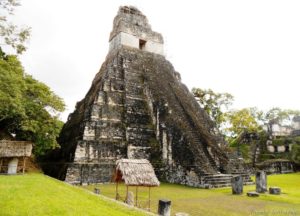
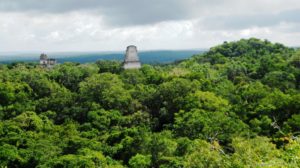
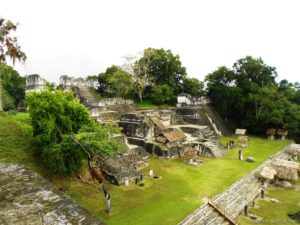
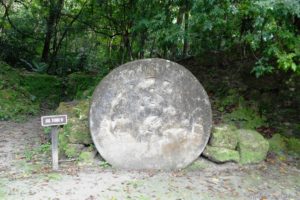
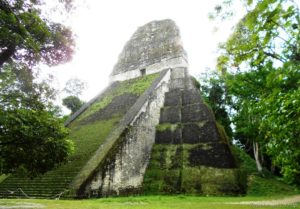
The Pyramids of Giza - Egypt
One of the 5 UNESCO World Heritage bucket list destinations you should see before you die are the Pyramids of Giza. Surely, the sight of the ancient wonder of the world will take your breath away. We visited Egypt in March of 2000, so almost 20 years ago, but I still vividly remember my time at the pyramids.
The local bus dropped us off by the entrance right in front of the Sphinx. It was an absolutely amazing sight to see. The Sphinx, the Great Pyramid, and the other two pyramids sitting in the middle of the desert simply mesmerized us. It was an awesome feeling to be standing in front of structures erected over 4,500 years ago during the times of the ancient Egyptian pharaohs.
All the pyramids were built as burial places for the pharaohs and their wives. The Great Pyramid, which is the tallest of the three, was built in the 26th century BC as a tomb for Pharaoh Khufu (Cheops in Greek). The second pyramid, with a recognizable outer casting near the top, was built to Khufu’s son, Khafre. Finally, the third and smallest pyramid was built as a tomb for Khufu’s grandson, pharaoh Menkaure.
The pyramids have intricate passageways and chambers inside, which I would recommend visiting without reservation. We went inside the Pyramid of Menkaure, which was definitely interesting. It makes you wonder, though, what the chambers would look like, had the pyramids not been pillaged over the centuries.
Overall, our visit to the pyramids was great. We liked it so much so that we cambe back for a laser show at night. Looking at the Sphinx and the pyramids in the setting sun was certainly a sight to behold.
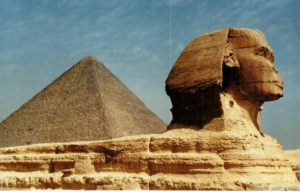
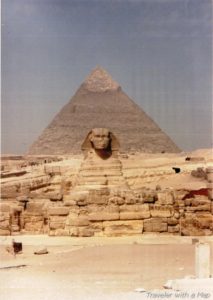
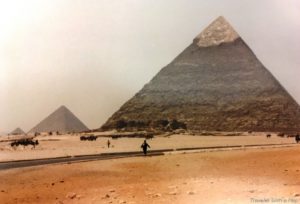
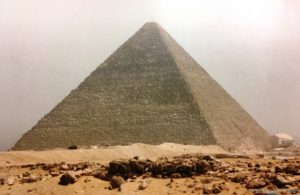
The Blue Mosque - Istanbul, Turkey
Located in the old quarter of Istanbul, the Blue Mosque is mesmerizing. Multiple domes and half- domes adorn the building while six slender minarets surround it. It’s certainly a sight to behold. Once inside, you will be dazzled by the thousands of ceramic tiles decorating the interior walls. Portraying people and animals is forbidden in Islam but you can admire Islamic art in the form of calligraphy decorating the main dome. The tiles, together with over 200 stained glass windows, and the deep red carpet, have an incredible effect on visitors. We stood there in awe of the grandeur and beauty of the place.
The Blue Mosque was built at the beginning of the 17th century during the rule of Sultan Ahmed I. In fact, it only took 7 years to complete. Today, the mosque attracts thousands of visitors who come to admire its charm. The building is closed to visitors during prayer time but reopens shortly afterwards. You will need to take your shoes off and cover your hair if you’re a woman before entering the Blue Mosque.
Make sure to come back to the area after dark. The illuminated Blue Mosque looks spectacular at night.
The Blue Mosque along with Hagia Sophia are the two most recognizable symbols of Istanbul. They are a portrait of a rich history of a city that spans two continents and connects the east with the west.
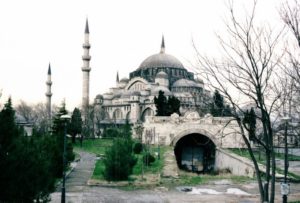

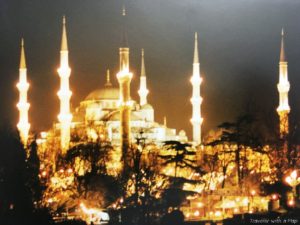
The Dome of the Rock - Jerusalem, Israel
The Dome of the Rock is one of the most recognizable symbols of Jerusalem. It is located on top of the Temple Mount, or Haram al-Sharif in Arabic, a holy site, with religious significance for Muslims, Jews, and Christians.
In short, the Temple Mount is the third holiest place on earth for the Muslims, after Mecca and Medina. For them, the rock on which the Dome of the Rock sits, marks the location of the Prophet Muhammad’s ascension into heaven. For the Jews, it is a sacred place where the Temple of Solomon and the Second Jewish Temple stood. Right underneath the Temple Mount is the Western Wall at which the Jews pray. Because Christianity has its roots in Judaism, the site is also important for Christians. Abraham is believed to have offered his son Isaak to God on the very spot. So, it’s no surprise that the Temple Mount is a revered and holy site. It is also a place constantly contested and fought over by the Muslims and Jews.
The beauty of the Dome of the Rock is unimaginable. Basically octagonal in shape, the building is decorated with a dazzling golden dome. Beautiful blue tile mosaic decorates the exterior of the building while quotes from the Quran are inscribed below the dome.
Non- Muslims cannot go inside the mosque, so we weren’t able to see its interior. Yet, strolling through the magnificent plaza, we marveled at the thousands of years of its turbulent history.
Israel, and in particular Jerusalem with the Dome of the Rock, should absolutely be a bucket list destination for any history buff. It’s a one of a kind experience.
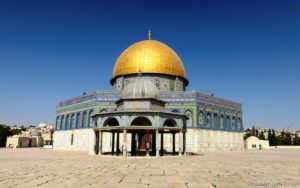
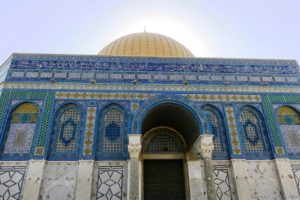
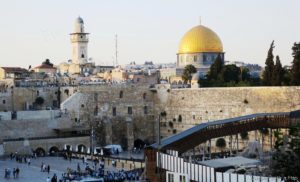
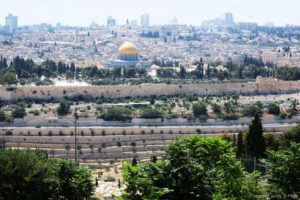
Other UNESCO sites you should visit:
Click on the link below to read about:
